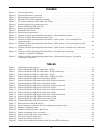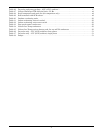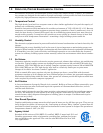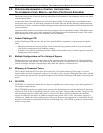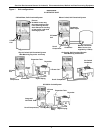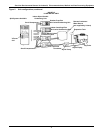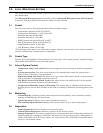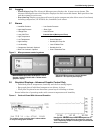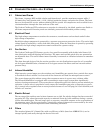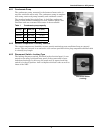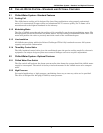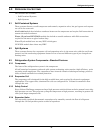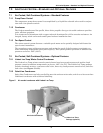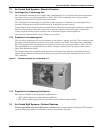
Local Monitoring Systems
5
3.0 LOCAL MONITORING SYSTEMS
Two levels of microprocessor control systems are available providing precise control and monitoring of
the critical space.
The Advanced Microprocessor is standard, and the Advanced Microprocessor with Graphics
is optional. The main control functions are similar for both controls.
3.1 Control
The user must enter a three-digit password before making changes.
• Temperature Setpoint 65-85°F (18-29°C)*
• Temperature Sensitivity +1-10°F (0.6-5.6°C)
• Humidity Setpoint 20-80% RH*
• Humidity Sensitivity 1-30% RH
• High Temperature Alarm 35-90°F (2-32°C)
• Low Temperature Alarm 35-90°F (2-32°C)
• High Humidity Alarm 15-85% RH
• Low Humidity Alarm 15-85% RH
* The microprocessor may be set within these ranges; however, the unit may not be able to control to
extreme combinations of temperature and humidity.
3.2 Control Type
Factory set-up for Intelligent Control which uses “fuzzy logic” and “expert systems” methods. Propor-
tional and Tunable PID are user selectable options.
3.3 Internal System Control
• Compressor short cycle control: Prevents compressor short-cycling and needless compressor
wear.
• System auto restart: The auto restart feature will automatically restart the system after a
power failure. Time delay is programmable.
• Sequential Load Activation: On initial start-up or restart after power failure, each operational
load is sequenced to minimize total inrush current.
• Hot Water / Econ-O-Coil Flush Cycles: Hot water reheat coils and Econ-O-Coils are periodi-
cally flushed to prevent a build-up of contaminants.
• Temperature/Humidity Sensor Calibration: The sensors may be calibrated from the front
monitor panel to insure that all units in the room are similarly calibrated, assuring greater preci-
sion.
3.4 Monitoring
• Normal display: Includes present room temperature and humidity, active functions (cooling,
heating, dehumidifying), and any alarms.
• Operating status: Displays each control operation in percent.
• Read analog inputs function: Displays the present values of up to four analog inputs.
3.5 Diagnostics
• Input diagnostics: Reviews inputs to the control system.
• Control board diagnostics: Initiates a self-test of the control system.
• Output diagnostics: Tests major components by turning them on and off from the control panel.
Includes: main fan, compressor, liquid line solenoid valve, hot gas bypass valve, chilled water or
chilled GLYCOOL valve, R-5 relay, reheat, hot water reheat valve, humidifier, humidifier make-
up valve, and common alarm.




